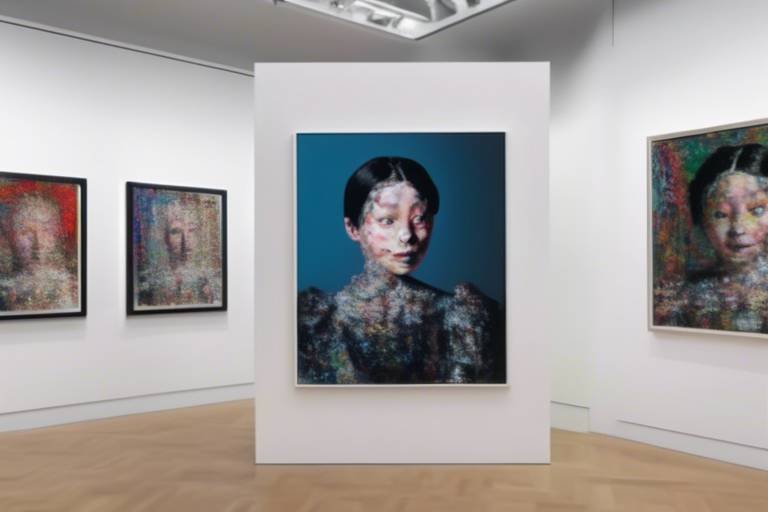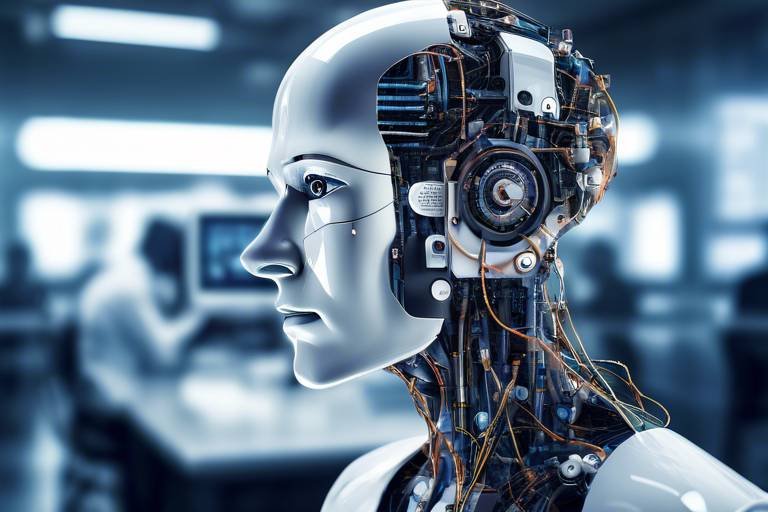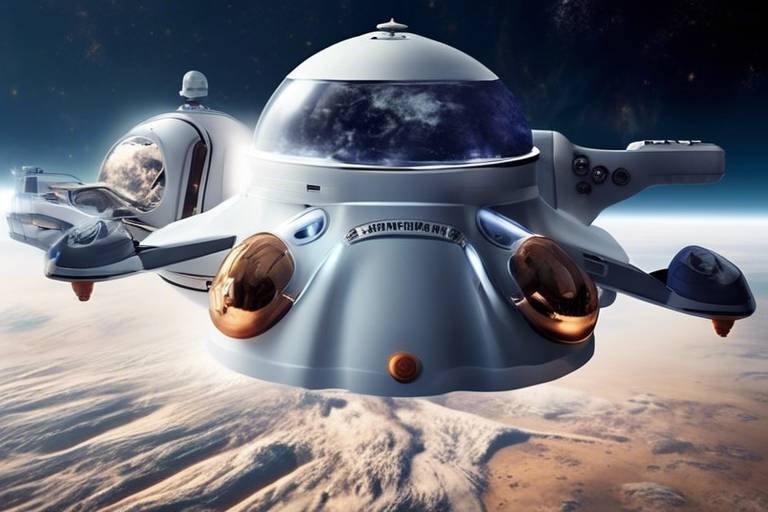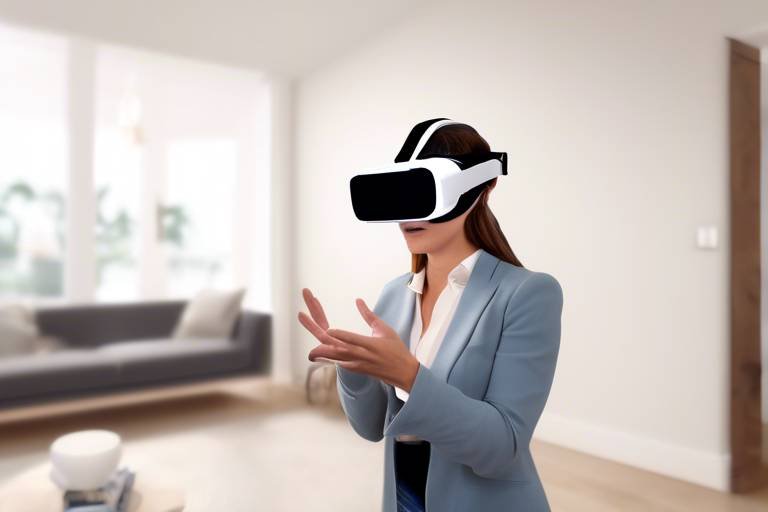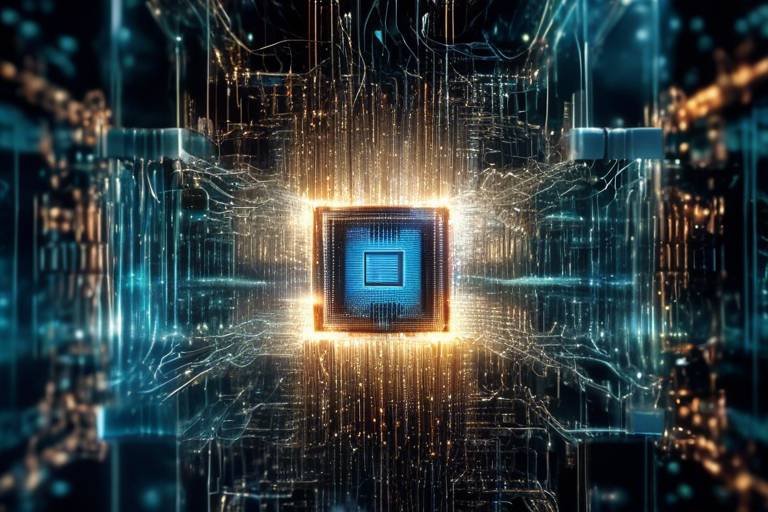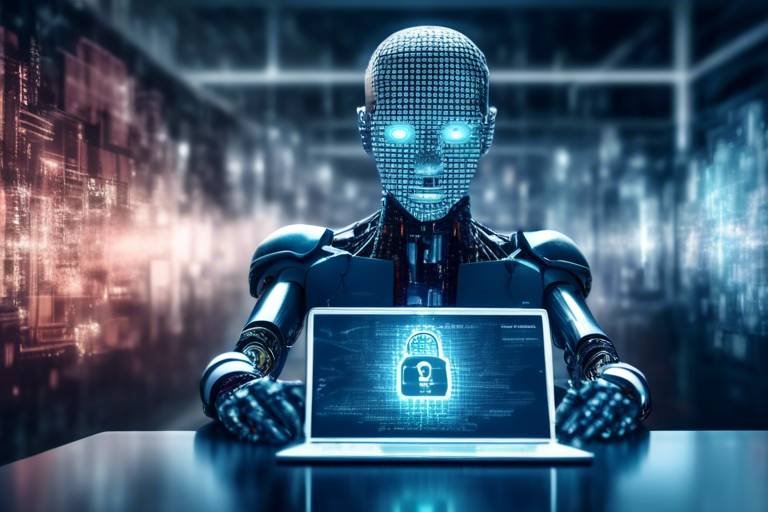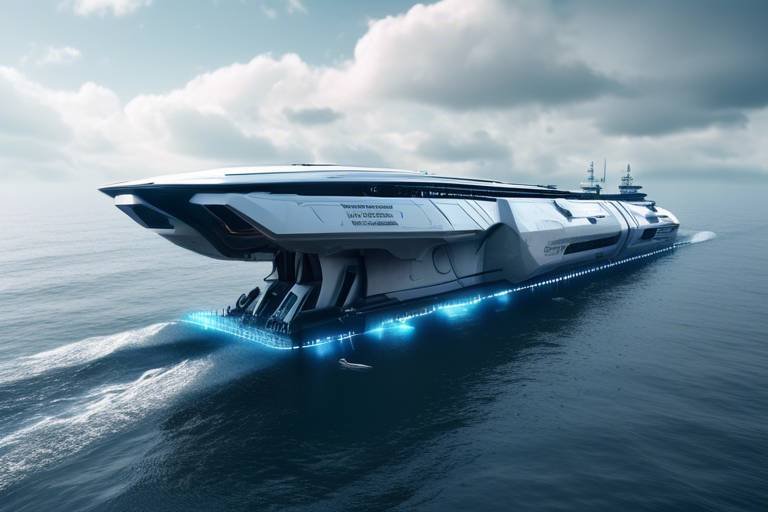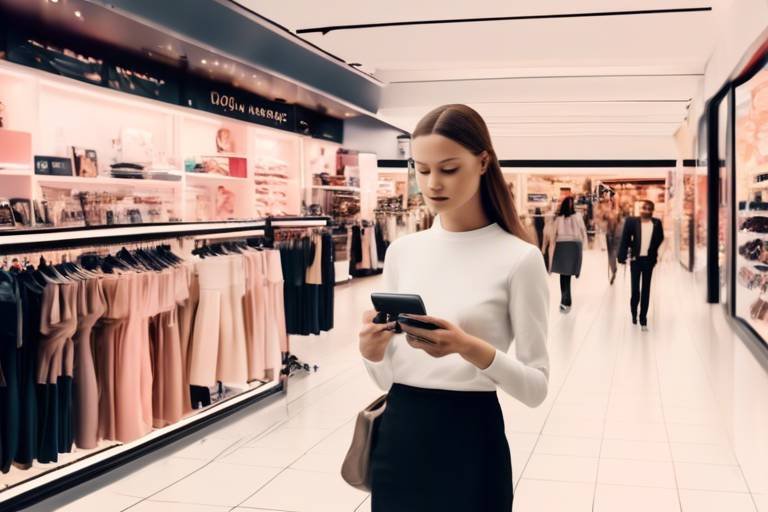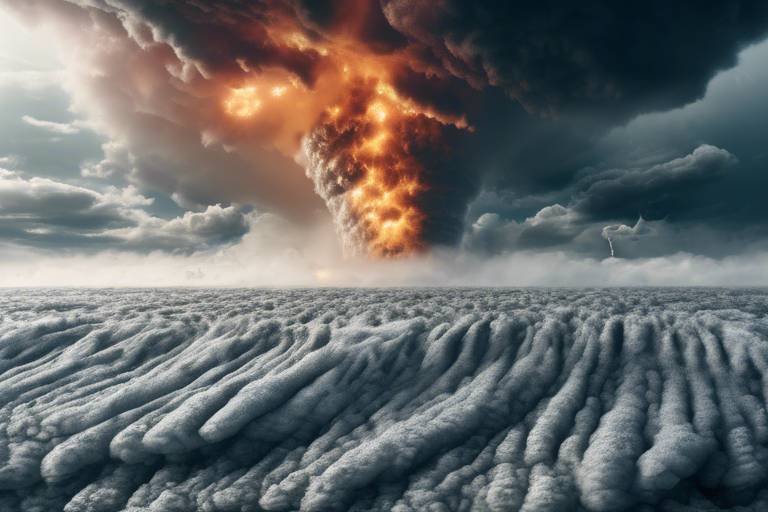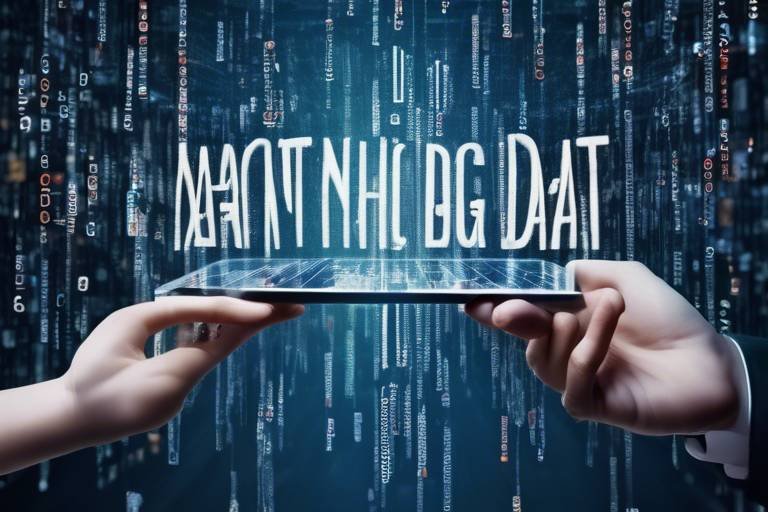Is AI Taking Over the Art World?
The intersection of art and technology has always been a fascinating realm, but today, we find ourselves on the brink of an unprecedented transformation. The rise of artificial intelligence (AI) in the art world is not just a trend; it’s a revolution that challenges our very understanding of creativity and artistic expression. Imagine walking through a gallery filled with stunning pieces, only to discover that some of them were created by algorithms rather than human hands. This reality is becoming increasingly common, and it raises intriguing questions: Can a machine truly create art? What does it mean for traditional artists? And how will this impact the future of creativity itself?
AI is not merely a tool; it’s a collaborator, a source of inspiration, and sometimes, a competitor. Artists are beginning to leverage AI’s capabilities to push the boundaries of their work, exploring new styles and techniques that were previously unimaginable. As we delve into this topic, we will explore how AI is reshaping the artistic landscape, the implications for traditional artists, and the ethical dilemmas that arise from this new partnership. It’s a thrilling time to be involved in the arts, and whether you’re an artist, a collector, or simply an art enthusiast, understanding the impact of AI is essential.
With AI technologies evolving at an astonishing pace, the art world is witnessing a surge in AI-generated artworks. These creations, often indistinguishable from those made by human hands, challenge the very notion of originality and authorship. As we explore the implications of this technological advancement, it’s crucial to recognize that while AI can replicate styles and generate new pieces, the essence of art—its emotional resonance and cultural significance—remains deeply rooted in human experience. The question we must grapple with is not just whether AI can create art, but what it means for us as creators and consumers of art.
- Can AI create art that resonates emotionally? - While AI can generate visually appealing works, the emotional depth often comes from human experience and intention.
- Are traditional artists at risk of becoming obsolete? - Not necessarily. Many artists are finding ways to incorporate AI into their work, using it as a tool rather than a replacement.
- What ethical concerns arise from AI-generated art? - Issues of authorship, originality, and the potential for AI to overshadow human creativity are significant discussions within the art community.
- How is the art market responding to AI-generated works? - The market is evolving, with increasing interest from collectors and galleries, but valuation remains complex and nuanced.

The Rise of AI in Art Creation
In recent years, we have witnessed a remarkable transformation in the art world, largely driven by the rise of artificial intelligence (AI). This technology is not just a passing trend; it is reshaping how art is created, perceived, and consumed. Imagine a world where machines can create stunning paintings, compose music, or even write poetry—this is no longer the stuff of science fiction. AI is stepping into the creative arena, and its influence is becoming increasingly undeniable.
One of the most exciting aspects of AI in art creation is its ability to generate original works that challenge our understanding of creativity. AI algorithms can analyze vast amounts of data, learning from countless styles, techniques, and historical contexts. This capability enables AI to produce art that is not only visually appealing but also conceptually intriguing. For instance, AI-generated pieces can mimic the brushstrokes of Van Gogh or the color palettes of Monet, all while introducing unique elements that are distinctly its own.
But how does this actually work? At the heart of AI art creation are algorithms and neural networks that process information much like the human brain. These systems are trained on extensive datasets, allowing them to recognize patterns and generate new content. The result is a fascinating blend of technology and creativity that can produce everything from abstract paintings to realistic portraits.
Moreover, AI is democratizing art creation. With user-friendly applications and tools, individuals who may not have formal training in art can now experiment with their creativity. For example, platforms like DALL-E and Artbreeder allow users to create unique images by simply inputting text prompts or adjusting parameters. This accessibility opens the door for a broader range of voices and ideas in the art world, challenging the traditional gatekeeping that has often defined artistic success.
However, this rise of AI in art creation is not without controversy. As AI-generated art gains traction, it raises questions about the nature of creativity and authorship. Can a machine truly be considered an artist? Or is it merely a tool that reflects human creativity? These questions provoke deep discussions about the essence of art itself. As we dive deeper into this new frontier, it’s essential to consider both the opportunities and challenges that AI presents to artists and art enthusiasts alike.
In summary, the rise of AI in art creation is ushering in a new era marked by innovation and exploration. It encourages artists to push boundaries, experiment with new forms, and engage in collaborative processes that were previously unimaginable. As we embrace this technological evolution, we must remain open to the possibilities it offers while also critically examining its implications for the future of artistic expression.
- What is AI-generated art? AI-generated art is artwork created using artificial intelligence algorithms that analyze data and generate original pieces.
- Can AI replace human artists? While AI can create art, it lacks the emotional depth and personal experiences that human artists bring to their work.
- How is AI art valued? The valuation of AI art can be complex, influenced by factors like originality, market demand, and the technology used in its creation.
- What are some popular AI art tools? Some popular AI art tools include DALL-E, Artbreeder, and DeepArt, which allow users to create and manipulate images easily.

Impact on Traditional Artists
The rise of artificial intelligence in the art world has stirred a pot of mixed emotions among traditional artists. Some view AI as a threat, a formidable competitor that could overshadow their hard-earned skills, while others see it as an opportunity to innovate and expand their creative horizons. Imagine standing at the edge of a vast ocean, where the waves of technology crash against the shore of traditional artistry. What will you do? Will you retreat to the safety of the beach, or will you dive into the unknown depths of this new world?
Many artists are grappling with the question of how to coexist with AI. The traditional art scene, characterized by painstaking techniques and deeply personal expression, is now confronted with algorithms that can produce stunning visuals in a fraction of the time. This shift has led to a re-evaluation of what it means to be an artist in today's society. Will the brush and canvas become relics of the past, or can they find a way to thrive alongside their digital counterparts?
Interestingly, some traditional artists are embracing AI as a tool rather than an adversary. They are learning to incorporate AI into their workflows, using it to enhance their creative processes. For instance, artists can use AI-generated sketches as a foundation, adding their personal touch to create something entirely unique. This blending of human intuition and machine precision can lead to exciting new forms of expression. Think of it as a dance between human creativity and machine intelligence, where both partners bring their strengths to the floor.
However, not all artists are on board with this technological revolution. There are concerns about the authenticity of AI-generated art and whether it can ever evoke the same emotional depth as a piece created by human hands. Many artists fear that the influx of AI art could dilute the value of traditional art forms, making it harder for them to earn a living. To illustrate this, consider the following table that outlines some of the challenges and opportunities faced by traditional artists in the age of AI:
| Challenges | Opportunities |
|---|---|
| Increased competition from AI-generated art | New creative possibilities through collaboration with AI |
| Concerns about the value of traditional art | Ability to reach wider audiences through digital platforms |
| Fear of losing artistic identity | Enhanced skills and techniques by learning AI tools |
Ultimately, the impact of AI on traditional artists is complex and multifaceted. As they navigate this new landscape, they must find ways to adapt and evolve. Some may choose to resist change, while others will seize the opportunity to break free from conventional boundaries. The question remains: can traditional artists redefine their roles in a world increasingly dominated by technology? Only time will tell, but one thing is certain—those who are willing to embrace change may find themselves at the forefront of a new artistic renaissance.
- How is AI changing the way art is created? AI tools can generate original artworks, providing artists with new techniques and inspiration.
- Are traditional artists losing their relevance due to AI? While some may feel threatened, many artists are finding ways to incorporate AI into their work, enhancing their creativity.
- What ethical concerns arise from AI-generated art? Issues of authorship and originality are central to discussions about the impact of AI on artistic integrity.

Collaboration Between AI and Artists
The collaboration between AI and artists is a fascinating phenomenon that is reshaping the creative landscape. Imagine a world where the brush strokes of a painter are enhanced by algorithms that analyze thousands of artworks, suggesting color palettes and styles that the artist may not have considered. This is not just a fantasy; it’s happening right now! Artists are increasingly embracing AI as a partner rather than a competitor, leading to an exciting fusion of human intuition and machine learning.
One of the most compelling aspects of this collaboration is the way it opens up new avenues for creativity. Artists can now explore uncharted territories, creating pieces that blend their unique vision with the analytical prowess of AI. For instance, some artists use AI to generate initial concepts, which they then refine and personalize. This process can lead to unexpected results, sparking inspiration and pushing the boundaries of traditional art forms.
Moreover, collaborations often result in stunning visual experiences that captivate audiences. Take, for example, the work of Refik Anadol, who uses AI to create mesmerizing installations that transform spaces into dynamic canvases. His projects often involve data-driven algorithms that interpret environmental inputs, resulting in ever-changing visual displays that engage viewers on multiple levels. This interplay between human creativity and AI’s computational abilities creates a rich tapestry of artistic expression.
However, it’s essential to acknowledge that this partnership is not without its challenges. The question of authorship looms large: who is the true creator of a piece generated through the collaboration of human and machine? Is it the artist who provides the initial vision, or the AI that executes the technical aspects? This ethical dilemma is at the forefront of discussions in the art community, prompting many to rethink traditional notions of creativity and ownership.
To navigate this complex landscape, artists and technologists are developing frameworks that address these questions. For example, some artists are choosing to credit AI as a co-creator, acknowledging its role in the artistic process. This shift not only fosters transparency but also enriches the dialogue around the evolving nature of creativity in the age of technology.
In conclusion, the collaboration between AI and artists is a thrilling journey into the future of art. It challenges conventional wisdom, pushes creative boundaries, and invites us to reconsider what it means to be an artist in a world increasingly influenced by technology. As this partnership continues to evolve, we can only anticipate the incredible innovations that lie ahead.
- What does collaboration between AI and artists look like?
Collaboration can involve artists using AI tools to generate ideas, refine their work, or create entirely new pieces that blend human creativity with machine intelligence. - Are AI-generated artworks considered original?
This is a debated topic. While AI can produce unique pieces, questions of authorship and originality arise, often leading to discussions about the role of the human artist. - How are artists adapting to the rise of AI?
Many artists are embracing AI as a tool rather than a threat, finding ways to incorporate it into their creative processes to enhance their work and explore new styles. - What are some examples of successful AI-art collaborations?
Artists like Refik Anadol and Mario Klingemann have gained recognition for their innovative works that blend AI technology with traditional artistic techniques.

Creative Tools for Artists
In today’s rapidly evolving artistic landscape, AI-powered creative tools are revolutionizing the way artists approach their craft. Imagine having a partner that never tires, offers endless inspiration, and can execute your wildest ideas in an instant. Sounds like a dream, right? Well, it's becoming a reality! With the rise of artificial intelligence, artists now have access to an array of innovative tools that enhance their creative processes and push the boundaries of traditional art.
One of the most exciting aspects of these AI tools is their ability to generate unique artwork based on specific parameters set by the artist. For example, platforms like DeepArt and Artbreeder allow users to input styles or themes, and the AI generates stunning visuals that reflect those inputs. This not only saves time but also provides artists with a fresh perspective on their ideas. It’s like having a creative brainstorming buddy who can visualize your thoughts in real-time!
Moreover, tools such as RunwayML and Adobe Sensei are becoming increasingly popular among artists. These platforms utilize machine learning algorithms to assist in everything from image editing to video production. They can automate mundane tasks, allowing artists to focus more on the creative aspects of their work. For instance, an artist can use AI to help with color correction or even to suggest complementary colors for their palette. This kind of support can lead to a more productive and enjoyable creative process.
But it doesn't stop there! Artists can also leverage AI for music composition and writing. Tools like AIVA and OpenAI's GPT-3 are making waves in these areas, enabling creators to generate original scores or even assist in crafting compelling narratives. The collaboration between artists and AI is not just about enhancing existing skills; it’s about exploring new forms of expression that were previously unimaginable.
As with any new technology, there are challenges to consider. Artists must navigate the learning curve associated with these tools, and there’s always a question of how much of the creative process should be left to machines. However, the potential benefits far outweigh these concerns. As artists embrace these technologies, they are not only expanding their toolkit but are also redefining what it means to be an artist in the 21st century.
In conclusion, AI creative tools are not just a passing trend; they represent a significant shift in the art world. By integrating these technologies into their workflows, artists can explore new creative avenues, enhance their productivity, and ultimately produce work that resonates with a modern audience. The future of art is here, and it’s powered by artificial intelligence!
- What are AI creative tools? AI creative tools are software applications that utilize artificial intelligence to assist artists in generating, editing, or enhancing their artwork.
- Can AI replace human artists? While AI can assist and enhance the creative process, it is unlikely to replace human artists entirely as art is deeply rooted in human experience and emotion.
- How do I start using AI tools in my art? Begin by exploring popular AI applications like DeepArt, RunwayML, or Artbreeder. Most of these platforms offer user-friendly interfaces that make it easy to get started.
- Are AI-generated artworks considered original? This is a complex question that touches on ethics and copyright. While AI can create unique pieces, the degree of originality often depends on the artist's input and guidance.

Ethics of AI Collaboration
The collaboration between artificial intelligence and human artists opens a fascinating yet complex debate regarding the ethics of creativity. As we witness machines generating artwork that can rival human creations, questions arise about authorship, originality, and the very essence of artistic expression. Who truly owns an artwork created with the help of AI? Is it the programmer who designed the algorithm, the artist who provided the input, or the AI itself? These questions are not just academic; they have real-world implications for artists and the art market.
One of the primary concerns is the impact on traditional notions of creativity. For centuries, art has been seen as a deeply human endeavor, a reflection of personal experience and emotion. With AI stepping into this realm, we must consider whether a machine can genuinely understand or convey human feelings. While AI can analyze patterns and replicate styles, can it truly create something that resonates on a human level? This raises the question of whether AI-generated art can ever hold the same value as art created by human hands.
Moreover, the ethical implications extend to the potential for copyright infringement. AI systems often learn from vast datasets of existing artworks. If an AI creates a piece that closely resembles a famous painting or style, who is responsible for the infringement? The artist using the AI? The developers of the AI? Or perhaps even the AI itself? These scenarios highlight the need for clear guidelines and regulations surrounding AI in the art world.
As we navigate these ethical waters, it’s crucial to foster a dialogue among artists, technologists, and ethicists. Only through collaboration can we establish a framework that respects the contributions of all parties involved. This framework should include:
- Clear definitions of authorship when AI is involved in the creation process.
- Guidelines for the use of existing artworks in AI training datasets to prevent copyright violations.
- Consideration of the emotional impact of AI-generated art on audiences and its role in the broader cultural context.
Ultimately, the ethics of AI collaboration in art is not just about protecting individual rights but also about enriching the artistic landscape. By embracing the potential of AI while remaining mindful of its ethical implications, we can create a future where technology enhances human creativity rather than diminishes it.
- What is AI art? AI art refers to artworks created with the assistance of artificial intelligence algorithms, which can generate images, music, or even literature.
- Who owns AI-generated art? Ownership can be complex; it typically involves the artist who inputs the data, the developer of the AI, and sometimes the AI itself, depending on legal interpretations.
- Can AI truly be creative? While AI can mimic styles and generate new pieces based on learned patterns, the debate continues over whether it can innovate or express genuine human emotions.
- What are the ethical concerns surrounding AI in art? Key concerns include authorship, copyright issues, and the potential dilution of human creativity in the artistic process.

AI in Art Critique and Curation
As we dive into the fascinating realm of art critique and curation, it's essential to recognize that artificial intelligence is not merely a tool for creation; it's also becoming a pivotal player in how art is evaluated and showcased. Imagine a world where algorithms can analyze thousands of artworks in seconds, identifying trends, styles, and even emotional responses that might take a human critic much longer to discern. This is the power of AI in the art world, and it's reshaping the landscape in ways we never thought possible.
AI algorithms are increasingly being employed to assess artworks for exhibitions, helping curators sift through vast collections with unprecedented efficiency. By utilizing machine learning, these systems can learn from existing data, developing an understanding of what makes an artwork appealing or significant. This capability not only streamlines the selection process but also introduces a level of objectivity that can sometimes be lacking in traditional critique. However, this raises an intriguing question: can a machine truly understand the emotional depth of a piece, or is it merely processing data?
In practice, AI-assisted curation often involves analyzing various factors, including:
- Color palettes and composition
- Artistic styles and historical context
- Market trends and audience engagement
One fascinating example of AI in curation is the use of algorithms to predict which artworks might resonate with specific audiences. By analyzing social media trends, viewing habits, and even demographic data, AI can help curators tailor exhibitions that are more likely to engage visitors. This not only enhances the viewer's experience but also assists galleries in making informed decisions about which pieces to showcase, ultimately leading to increased attendance and interest.
However, while AI brings many advantages to the table, it also prompts critical discussions about the role of human intuition and expertise in art critique. Can we truly rely on machines to make decisions about art, or should they be viewed as supportive tools that enhance human creativity? This debate is particularly relevant as we consider the future of art curation, where the balance between human insight and technological assistance will likely evolve.
Moreover, the ethical implications of using AI in art critique cannot be overlooked. Questions arise regarding the authenticity of AI-generated evaluations and the potential for bias in algorithmic processes. How do we ensure that these systems are fair and representative of diverse artistic expressions? As we move forward, it will be crucial for artists, curators, and technologists to engage in ongoing dialogues about the responsibilities that come with integrating AI into the art world.
In conclusion, the integration of AI into art critique and curation is not just a passing trend; it is a profound shift that challenges our understanding of creativity and evaluation. As we embrace these technologies, we must navigate the complexities they introduce, ensuring that the heart of art—its ability to evoke emotion and provoke thought—remains at the forefront of our endeavors.
- How does AI impact the traditional role of art critics? AI can analyze artworks quickly and objectively, but it lacks the emotional and contextual understanding that human critics provide.
- Can AI truly understand art? While AI can process data and identify patterns, it does not possess emotional intelligence or subjective experience, which are essential in understanding art.
- What are the ethical concerns surrounding AI in art? Issues of bias, authenticity, and the potential loss of human insight are significant concerns as AI becomes more integrated into the art world.

Market Trends in AI Art
The landscape of the art market is undergoing a significant transformation, largely due to the emergence of AI-generated art. As more artists and technologists collaborate to produce innovative works, the demand for these pieces is rising, reshaping the way collectors and galleries approach art acquisition. This trend raises intriguing questions: Are we witnessing the dawn of a new artistic era, or is this merely a passing fad? The answer seems to lean towards the former, as AI art garners increasing attention and legitimacy in the traditional art world.
One of the most striking trends is the growing acceptance of AI art in prestigious galleries and exhibitions. Just a few years ago, the idea of an algorithm creating art was met with skepticism. However, today, we see AI-generated pieces being showcased alongside works from renowned artists. This shift is not just about novelty; it reflects a broader acceptance of technology as a legitimate medium for artistic expression. For instance, the Christie's auction house made headlines when it sold an AI-generated artwork for a staggering $432,500, proving that collectors are willing to invest in this new genre.
Moreover, the pricing of AI artworks is becoming a hot topic of discussion. Unlike traditional art, where factors like the artist's reputation, medium, and historical significance play a significant role in valuation, AI art introduces a new set of criteria. The algorithm used, the data it was trained on, and even the collaborative process between the human artist and the AI can all influence the artwork's market value. This complexity can be both exciting and daunting for collectors who are navigating this uncharted territory.
| Factor | Influence on Value |
|---|---|
| Algorithm Complexity | More intricate algorithms may produce more unique and desirable artworks. |
| Collaboration Level | Greater involvement from human artists can enhance perceived value. |
| Exhibition History | Artworks that have been featured in notable exhibitions may command higher prices. |
As we delve deeper into the market trends, it's essential to note the emergence of online platforms dedicated to AI art sales. These platforms not only democratize access to AI-generated pieces but also provide a space for new artists to showcase their work. The rise of NFTs (non-fungible tokens) has further accelerated this trend, allowing digital artworks to be bought and sold in a secure and transparent manner. Collectors are increasingly drawn to the idea of owning unique digital assets, and AI art fits perfectly into this narrative.
However, the rapid growth of AI art also raises questions about its sustainability. Some critics argue that the market may become oversaturated with AI-generated pieces, leading to a decline in value. Others believe that as technology advances, the quality and originality of AI art will continue to improve, maintaining its appeal. The truth likely lies somewhere in between, as the market will undoubtedly evolve alongside technological advancements.
In conclusion, the trends in the AI art market reflect a dynamic interplay between technology and creativity. As artists embrace AI as a tool rather than a replacement, the potential for innovation is limitless. Collectors and galleries are beginning to recognize the significance of this movement, paving the way for a future where AI-generated art holds a respected place in the art world. The journey has just begun, and it's an exhilarating ride for everyone involved.
- What is AI-generated art? AI-generated art refers to artworks created with the assistance of artificial intelligence, often using algorithms and machine learning techniques.
- How is the value of AI art determined? The value can depend on factors such as the complexity of the algorithm, the artist's involvement, and the artwork's exhibition history.
- Are traditional artists threatened by AI art? While some may feel challenged, many traditional artists are finding ways to collaborate with AI, leading to new creative opportunities.
- What role do NFTs play in AI art? NFTs provide a way to buy and sell AI art securely, ensuring that each piece is unique and traceable.

Valuation of AI Artworks
When it comes to valuing AI-generated artworks, the process can feel like trying to hit a moving target. Unlike traditional art, where factors such as the artist's reputation, historical significance, and medium play a crucial role in determining value, AI art introduces a whole new set of complexities. So, what exactly influences the valuation of these digital creations? Here are some key factors to consider:
- Algorithm Complexity: The sophistication of the AI algorithm used to create the artwork can significantly impact its value. More advanced algorithms that produce unique and intricate pieces often command higher prices.
- Rarity: Just like any collectible, rarity plays a vital role. Limited editions or one-of-a-kind pieces generated by AI can fetch a premium compared to mass-produced works.
- Market Demand: The growing interest in AI art can drive prices up. As collectors become more familiar with AI-generated pieces, their demand may increase, influencing overall market trends.
- Artist Collaboration: When an artist collaborates with AI, the human touch can elevate the perceived value of the piece. Artworks that blend human creativity and machine learning often attract higher bids.
To illustrate these factors, let’s take a look at a comparison of traditional art and AI art valuation:
| Factor | Traditional Art | AI Art |
|---|---|---|
| Artist Reputation | Highly significant | Emerging relevance |
| Medium | Oil, acrylic, etc. | Digital, generative |
| Rarity | Limited editions or unique | Algorithmic uniqueness |
| Market Demand | Stable but niche | Rapidly growing |
As we can see from the table, while some valuation factors remain constant across both realms, others are distinctly different. The art world is evolving, and so are its valuation methods. As AI continues to integrate into the art scene, it’s crucial for collectors and artists alike to stay informed about these trends.
In conclusion, valuing AI artworks is not just about the piece itself; it’s about understanding the broader context in which it exists. The art market is becoming a fascinating blend of technology and creativity, and as we navigate this new terrain, the definitions of value will undoubtedly continue to shift. So, whether you're a collector, an artist, or simply an art enthusiast, keeping an eye on these dynamics will be essential for appreciating the future of art.
- How do I determine the value of an AI artwork? Consider factors such as algorithm complexity, rarity, market demand, and whether there's a collaboration with a human artist.
- Are AI artworks considered original? This is a debated topic. While the AI generates the artwork, the originality can be influenced by the input and guidance of human artists.
- Can AI art appreciate in value over time? Yes, as the market for AI art grows and evolves, certain pieces may appreciate, especially those created by renowned algorithms or in collaboration with established artists.

Future of AI in the Art Market
The future of AI in the art market is a captivating topic that sparks curiosity and debate. As technology continues to evolve at an unprecedented pace, the way we perceive, create, and value art is likely to shift dramatically. Imagine a world where artists and algorithms work hand in hand, producing breathtaking pieces that challenge our conventional understanding of creativity. But what does this mean for the future of traditional art? Will AI become the new muse, or will it simply complement human ingenuity?
One of the most exciting prospects is the potential for personalized art experiences. AI can analyze individual preferences and create tailored artworks that resonate deeply with collectors. For instance, platforms could use machine learning to curate art collections that reflect a buyer's unique taste, making art more accessible and engaging. This kind of personalization could revolutionize how we interact with art, transforming it from a passive experience into an active dialogue between the viewer and the creator.
Moreover, the integration of AI in the art market opens up new avenues for democratizing art creation. With user-friendly AI tools, aspiring artists who may lack traditional skills can still produce compelling works. This could lead to a surge in diverse voices and styles, enriching the art world with fresh perspectives. Imagine a future where anyone, regardless of their background or training, can express themselves artistically with the help of AI. It’s a thrilling thought!
However, with these advancements come challenges that can’t be ignored. The question of authenticity and ownership looms large. As AI-generated art becomes more prevalent, collectors and critics may struggle to determine what constitutes 'original' art. Will a piece created by an algorithm hold the same value as one crafted by a human hand? This dilemma raises important questions about the very essence of art and its role in society.
Additionally, the art market may see a shift in valuation metrics. Traditional methods of pricing art, often based on the artist's reputation, medium, and historical significance, might need to be re-evaluated in light of AI contributions. Factors such as algorithm complexity, creativity level, and even the technology behind the artwork could become essential in determining its value. It’s an evolving landscape that requires both artists and collectors to adapt.
Looking ahead, we can anticipate a future where AI not only assists in the creation of art but also plays a pivotal role in its critique and curation. AI algorithms could analyze trends, audience reactions, and historical data to curate exhibitions that resonate with contemporary themes and societal issues. This might lead to a more dynamic and responsive art scene, where exhibitions are not just static displays but living entities that evolve over time.
In conclusion, the future of AI in the art market is filled with both excitement and uncertainty. As we navigate this new terrain, it’s crucial for artists, collectors, and critics to engage in open conversations about the implications of AI on creativity, ownership, and value. The art world is on the brink of a transformation that promises to challenge our perceptions and inspire new forms of expression. Are you ready to embrace this future?
- Will AI replace human artists? No, AI is more likely to serve as a tool that enhances human creativity rather than replacing it.
- How will AI impact the value of traditional art? The value of traditional art may be influenced by the rise of AI art, leading to new valuation metrics.
- Can AI create emotionally resonant art? Yes, AI can analyze human emotions and preferences to create art that resonates on a personal level.
- What ethical concerns arise from AI art? Issues of authorship, originality, and the potential for devaluation of human-created art are significant ethical concerns.
Frequently Asked Questions
- Is AI really capable of creating original art?
Absolutely! AI can generate unique pieces of art by analyzing vast datasets of existing artworks and then using algorithms to create something entirely new. It's like having a supercharged art assistant that can blend styles and techniques in ways we might not even imagine!
- How does AI impact traditional artists?
AI presents both challenges and opportunities for traditional artists. While some may feel threatened by AI-generated art, others are embracing it as a tool to enhance their creativity. Think of it as a new palette of colors; it’s all about how you choose to use it!
- Can artists collaborate with AI?
Definitely! Many artists are finding success in partnering with AI to create innovative works. This collaboration allows them to explore new creative avenues, combining human intuition with machine learning. It’s like having a creative buddy that never runs out of ideas!
- What are some popular AI tools for artists?
There are several AI tools available that can help artists enhance their work, such as DeepArt, Artbreeder, and Runway ML. These platforms offer features that allow for creative experimentation, making it easier for artists to push the boundaries of their craft!
- Are there ethical concerns with AI in art?
Yes, the rise of AI in art does raise important ethical questions, particularly around authorship and originality. Who owns the rights to an artwork created by an AI? These discussions are crucial as we navigate this new artistic landscape!
- How is AI used in art critique and curation?
AI is becoming a valuable tool in art critique and curation by analyzing trends and evaluating artworks based on various criteria. This can help curators make informed decisions about which pieces to showcase, ensuring a diverse and engaging exhibition!
- What are the current market trends for AI-generated art?
The interest in AI-generated art is skyrocketing, with many collectors and galleries eager to explore this new frontier. Prices can vary widely based on the artist's reputation and the uniqueness of the piece, much like traditional art!
- How is the value of AI artworks determined?
Valuing AI-generated artworks can be tricky. Factors such as the technology used, the artist's involvement, and market demand play significant roles. It’s an evolving process, much like how art valuation has always been a blend of subjective and objective measures!
- What does the future hold for AI in the art market?
The future of AI in the art market is full of potential and uncertainty. As technology continues to evolve, we can expect new forms of art and innovative ways for artists and collectors to engage with one another. It's an exciting time to be part of the art world!

